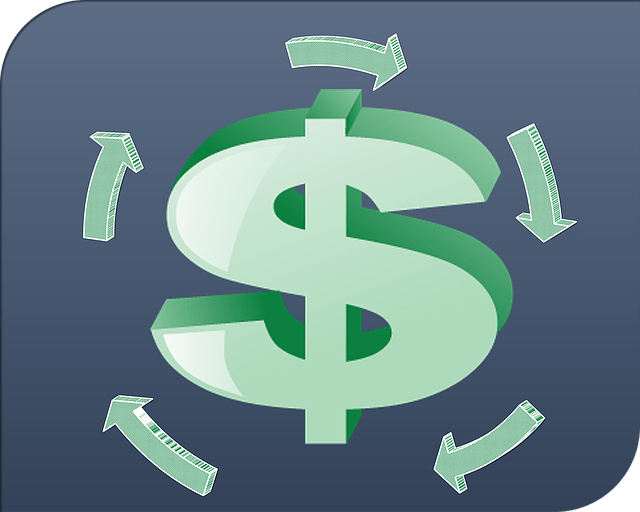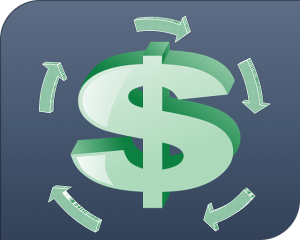A very important thing that you want to know about accounting as a business owner is to understand what the difference is between cash flow versus profit. A lot of entrepreneurs begin a business, and their goal is to turn a profit. However, they don’t know is that the thing that will keep their lights on is cash flow.
Picture, if you will, this hypothetical scenario; You are meeting with your business’s accountant to review your taxes. The accountant reports that you had a huge profit for the year. Even though the news is good, you’re really surprised because you don’t have any money in your account. You also don’t know how you will pay your profit’s income taxes.
This is something that happens a lot. There are businesses that turn profits and are negative in cash flow. Then there are others that are rich in cash flow without any profit. How can you be profitable but nothing to show for it when the year ends? In order to help you with understanding, we’ll be breaking down the big differences when it comes to cash flow versus profit. We also will give you some examples which illustrate the differences in cash flow versus profit. We’ll also make a few recommendations on which accounting basis it’s good to use for your business.
Before we get into all of that, we’re going to go over some definitions.
What’s Profit?

Profit’s a key metric that’s used for determining the success of a business. It’s defined as what remains after the costs for generating revenue are deduced. For instance, if you have a monthly revenue of $15,000 but you have to pay $11,000 to run the business, the profit margin is $4,000.
That being said, not all profit kinds are made equal. They also don’t reflect the truth profitability of your business equally. There’s two kinds of calculations that are used for illustrating the profit of a business: net and gross. Below we are going to look at them more closely.
Cash Flow versus Profit: Looking at Profit Types
Gross:
The gross profit of a company is the profit that’s made after the costs that are spent in providing services or making products. Here is the calculation:
Business revenue – COGS= Gross Profit.
What are COGS? This is basically the expenses that are directly and fully attributed to producing the goods or services that a company offers. For instance, when you are in retail, the COGS are the inventory costs in the store.
Net:
This is a reflection that is much more accurate that shows how profitable your business is since it will factor liabilities besides the COGS. It’s found when you subtract COGS, taxes and interest, and operating expenses from your business’s revenue. The operating expenses are things such as employee payroll, loan payments, rent on your retail space, and other expenses that can’t be attributed directly to what your business is offering.
Taxes and interest include local income, payroll, state and federal taxes, along with any type of interest that you owe on your business debts, such as any business loans.
What’s Cash Flow?
Even though profit’s your goal, it’s a better idea to determine the outlook of your business in the short and long-term using cash flow. Cash flow’s that net amount that’s moving out of and into your business at any time. The big word here is the word ‘time’. You can only understand cash flow when you look at it through any given timeline. The majority of businesses will track their cash flow month-by-month.
Cash flow positive’s when your business has more money that’s going into your business than is going out. Cash flow negative’s just the opposite – more is leaving your business than going into it.
To determine the cash flow of your business, it’s necessary to have a template that is made for cash flow statements. Start out by adding up the amount that you have when the month begins. Put that number into that box in the corner on the upper left-hand side. Then you want to fill in the cash outflows and cash inflows. These are things like your financing, investment and operating activities. Keep in mind that this is just cash. This doesn’t include purchases or invoices.
Therefore, if you’ve sent an invoice back in June and it’s not paid yet and it’s September, you are going to mark that as ‘collections in your accounts receivable’ for September. In the same idea, if you’re paying for something on your business card back in April but the statement isn’t being paid until May that has that purchase on it, you are going to mark that expense for May. The reason is because that’s when that cash outflow’s taking place.
Once you’ve input all the cash outflows and inflows, if the closing balance is more than the opening balance, you’re positive for the month. If the number’s lower, it’s negative.
Cash Flow Versus Profit: Income & Expenses
Since we’ve gone over what both of the terms mean, you should have a clearer idea of what the differences are when it comes to cash flow versus profit. Your company’s cash flow can be positive even though there’s no profit if its cash is coming from other sources rather than income, like when you take a loan out or you’re using your own money. These kinds of transactions don’t count as income but equity or liability transactions that show up on your balance sheet.
On the other end of the spectrum, it’s possible for a company to have cash flow that’s negative and a huge profit. This happens if you take money from your business to pay your personal expenses or you’re using it for or making loans or investments to other people. These cash out transaction types also are reported on your balance sheet, not the loss and profit statement.
Those differences when it comes to cash flow versus profit really comes down to the cash transactions source what type of basis of accounting it is.
Cash Flow Versus. Profit: The Basis of Accounting
Even though the source will determine if the transaction’s categorized as an expense or income, its basis of accounting will determine when you will report expenses and income, and it will greatly affect how much profit you will report for a certain period. There’s two methods: accrual & cash. Let’s look at each. While the source determines whether the transaction is categorized as income or an expense, the basis of accounting determines when you report income and expenses, and greatly affects the amount of profit you report for a period of time. There are two general basis of accounting methods: accrual and cash. Let’s explain each one.
Accrual
This recognizes expenses and revenue when they’re incurred. What does this mean? Well, it means that it’s irrelevant when the money’s actually received. Therefore, it’s only worried about when the expenses and income happened.
Cash
This is on the other end of accrual. In this basis accounting, revenue’s only recognized once it’s received. Expenses are only recognized when they’re paid. Not when the expenses get incurred and when the revenue’s earned. Therefore, when the expense or income hits the account is what will matter.
A lot of owners will use this for gauging how profitable the business is. However, this is often a huge problem if the company’s extending credit to customers or it’s using credit for financing purchases because these types of transactions aren’t going to be reflected on the activity of your bank account until they’re paid.
If your business is using credit, it’s likely you’re going to use something like QuickBooks or a spreadsheet to help you track what you’re owed by customers and what you owe the vendors. These bills and invoices get recorded to accounts payable and accounts receivable ledgers. As you are receiving or making payments, you will mark the bills and invoices as being paid in your ledgers and then reduce your balances. Accounts payable and accounts receivable both are reported on your balance sheet.
So that you can understand how this could affect the profit of your business for a certain period, we’re going to give you an example. Using this example, the business account will show the following deposits and checks for the month of June.
Bank Account Register June 2021
| Date | Description | Withdrawal | Deposit | Balance |
| Beginning Balance | $5,000 | |||
| 6/1/21 | Marketing | $2,000 | $3,000 | |
| 6/1/21 | Rent June | $1,250 | $1,750 | |
| 6/8/21 | Deposit: Sales | $8,000 | $9,750 | |
| 6/15/21 | Payroll | $4,000 | $5,750 | |
| 6/22/21 | Deposit: Sales | $5,000 | $10,750 | |
| 6/30/21 | Rent July | $1,250 | $9,500 | |
| Totals | $8,500 | $13,000 |
As you can see, the company put $4,500 into the account than they spent for June. This increased the balance to $13,000.
Now we are going to look at the way the transactions get reported both on an accrual and cash basis.
| Income/Expense | Amount | Date Incurred | Date Paid | Accural Basis | Cash Basis |
| Sales | $8,000 | 5/8/21 | 6/8/21 | $8,000 | |
| Sales | $5,000 | 6/15/21 | 6/22/21 | $5,000 | $5,000 |
| Total Sales June | $5,000 | $13,000 | |||
| Marketing | $2,000 | 6/1/21 | 6/1/21 | $2,000 | $2,000 |
| Rent June | $1,250 | 6/1/21 | 6/1/21 | $1,250 | $1,250 |
| Payroll | $4,000 | 5/31/21 | 6/15/21 | $4,000 | |
| Rent July | $1,250 | 7/1/21 | 6/30/21 | $1,250 | |
| Total Expenses | $3,250 | $8,500 | |||
| Profit – June | $1,750 | $4,500 |
It’s important to note that the profit that is in the accrual column is a lot lower than the one in the cash column. Now we want ot look at those differences and the way the profit might be really different.
That deposit on June 5th actually was payment for the sale that happened in May. This would be included on June’s profit & loss statement.
The same’s true for that payroll that was paid June 15th. It was for that pay period which ended the end of May.
That rent payment that was made June 30th wasn’t included on July’s statement since it’s July’s rent prepayment. It’s going to be included in July’s statement.
It’s easy to see how the accounting basis really can make a huge difference in a business’s reported bottom line and the profit. You want to know if the business is reporting the income based on an accrual or cash basis when it comes to taxes. If you’re running your business using cash basis however, you’re reporting on the accrual basis, there’s going to be huge differences. You should be certain that you know what you should expect by working with a knowledgeable tax professional.
Cash Flow Versus Profit – Bottom Line
When you compare cash flow versus profit, remember that profit’s that revenue that remains after you’ve deducted all of the costs that are related to operating your business. Cash flow’s the amount of cash that flows out of and into your business at any time. The biggest difference between profit and cash flow’s time. Profit isn’t able to show you a complete picture of the way your business’s doing financially since profit won’t show you when the outflows and inflows of cash come. It isn’t able to give you a day by day understanding of the financial well-being of your business.
Profit is able to show you the success of your business. However, it isn’t able to show if the business has enough money to survive for a long time. However, a business that isn’t profitable but has good cash flow won’t be able to remain that way for long.
We hope that you have a much better understanding when it comes to cash flow versus profit. It should give you a better knowledge of managing the accounting of your business a lot more responsibly and therefore ensure that the business will grow sustainably.
If you would like to have help with your business and are looking for ways that you can market your business, please contact us. We are happy to talk to you and let you know what we can do for you. Follow us on Facebook, too.




